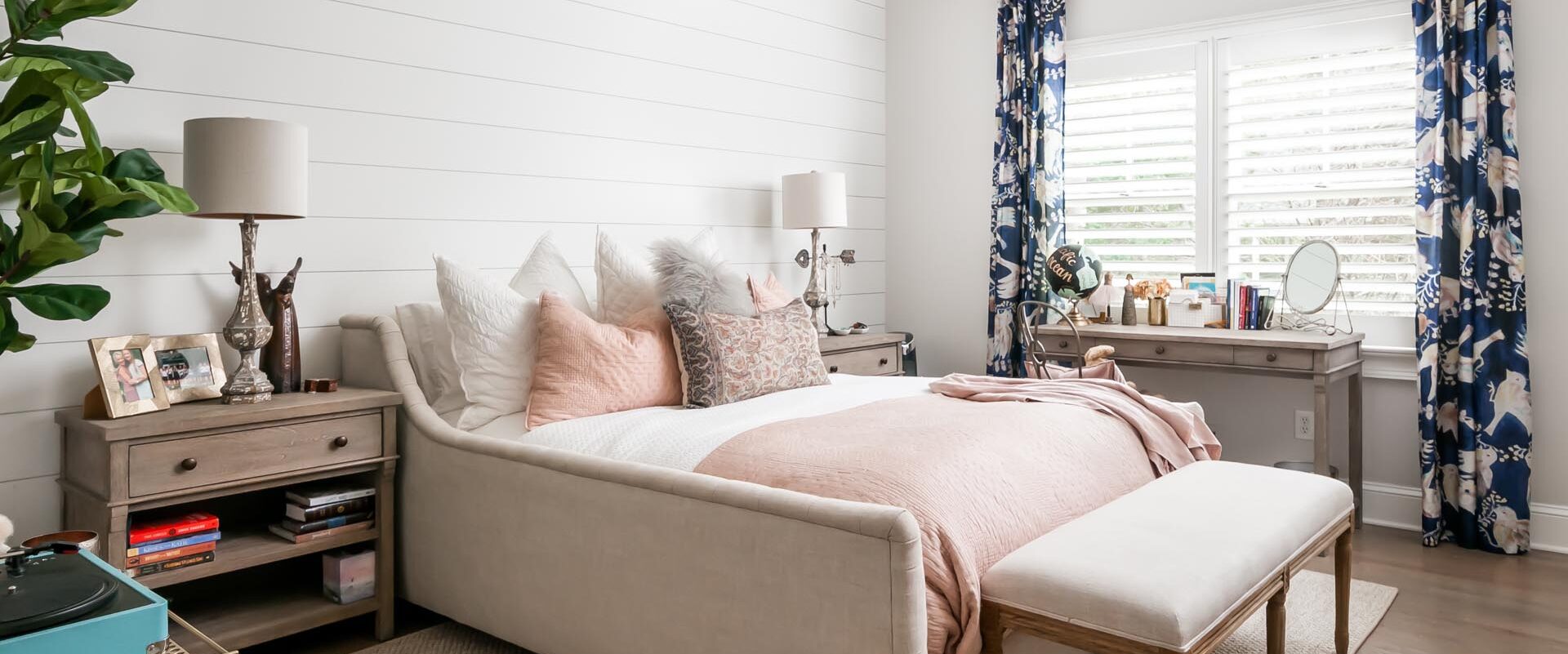

Our Design Styles

You don’t need extensive design knowledge to renovate your home, but it can help to understand which aesthetic you are most drawn to. Let us help you incorporate the features you like best, with expert design advice to guide your decisions along the way. Of course, when you share your inspiration photos from Instagram, Houzz, Pinterest or ripped from magazines, our design team will be able to recognize and help you define your personal design style.
If you have questions about combining different aesthetics or want to schedule a phone consultation, please get in touch. But first, you may want to take a look at what defines the primary styles our designers work with every day and get some inspiration.
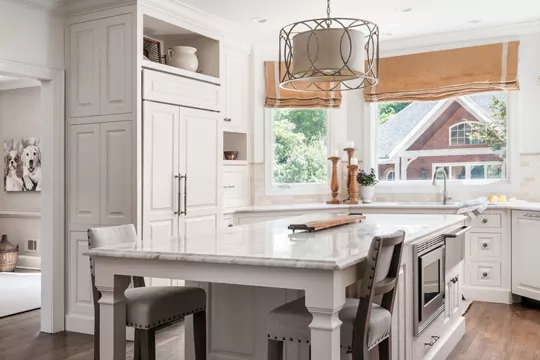
Traditional
Style
The classic feel of traditional style has allowed it to stand the test of time. Traditional interiors have their roots in standout time periods, including the Colonial and Victorian eras. Elements such as divided lite windows, hardwood flooring, classic furnishings, and custom millwork like coffered ceilings and raised panel wainscoting are associated with traditional style. Perhaps you love a true Southern traditional style that will make your home look like it jumped from the pages of Southern Living or Veranda. Whatever your traditional pleasure, our designers will work with you to give you a timeless design you’ll love.
Modern
Style
Whether your favorite modern style recalls the no-nonsense principles of the Bauhaus, the warm organic feel of Frank Lloyd Wright’s Fallingwater, the minimalism of Japanese design, the hygge vibes of Scandinavian interiors, the playful geometry and color of the midcentury era or a combination of any of the above, our designers are ready to nail your personal style. Gather up your favorite modern inspiration images to get a jump start on the design process.
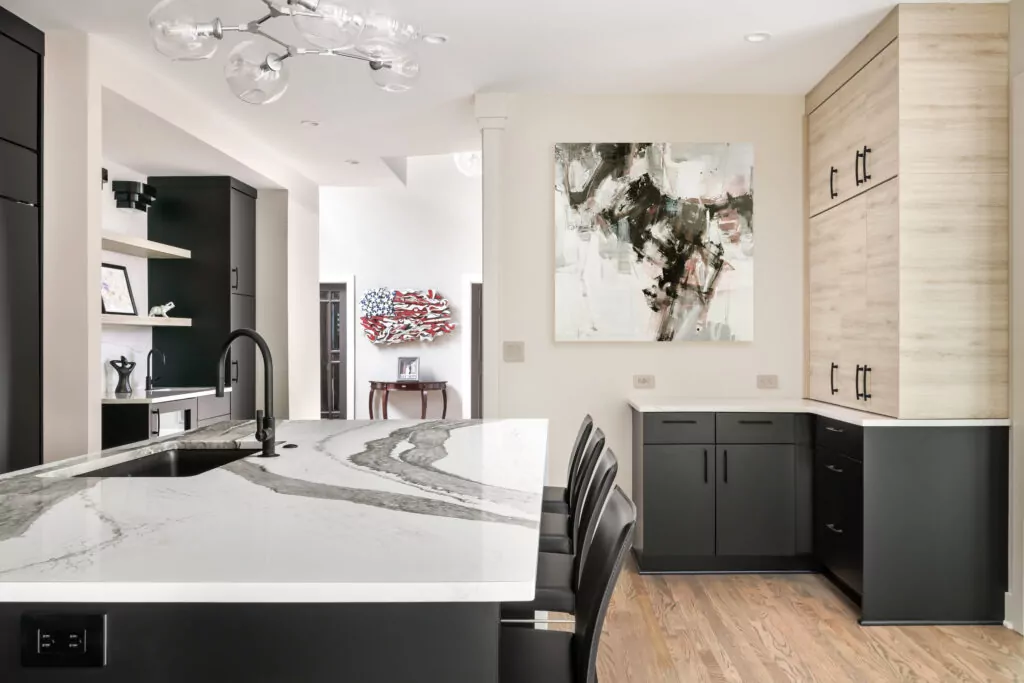
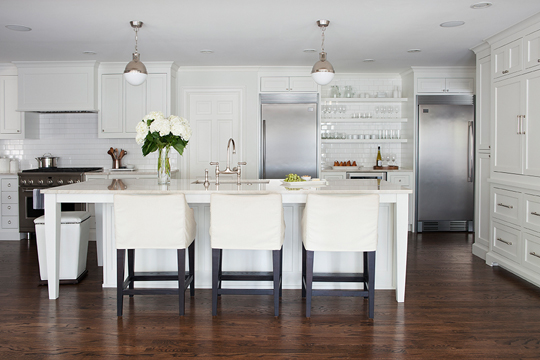
Transitional
Style
As the name suggests, transitional design lies somewhere between traditional and modern. The mix of the two requires a thoughtful balance. For example, you may see classic millwork trimming out a room full of midcentury furniture, or Shaker-style cabinets adorned with minimalist polished chrome hardware. Perhaps you’re feeling like your traditional home needs a few more clean lines, or less decorative elements to freshen it up. Then you are probably craving a transitional design.
Midcentury Modern
Style
Springing from architectural advances made earlier in the century, American modern style hit a peak in the 1950s and 1960s. Dubbed midcentury modern, the style favored simplicity and functionality, but that didn’t mean it didn’t have a playful side. Bold geometric patterns, fun shapes and lively primary colors are markers of the style. So are large windows, slatted room dividers, and exposed architectural elements such as ceiling beams. Whether you need to update your atomic ranch, add a midcentury-inspired addition to a more traditional home or refresh your house with midcentury furnishings, we will help you achieve the look.
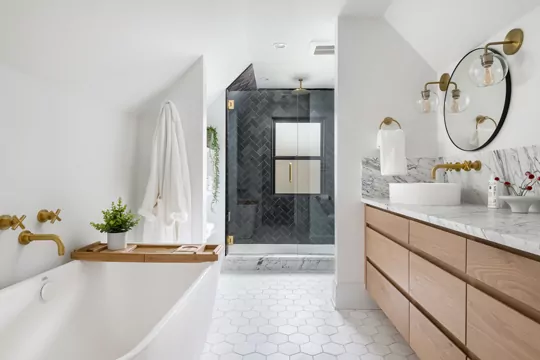
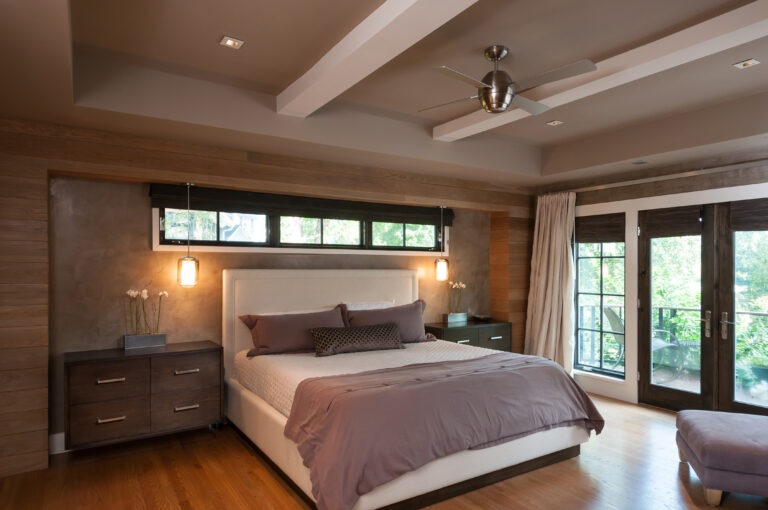
Contemporary
Style
Contemporary is not synonymous with modern, but there is an overlap between the two. While modernism harkens to a specific era, the contemporary design celebrates what’s new. Style deemed contemporary can include striking angles, a limited material palette, open floor plans, large windows, soaring ceilings, and the latest innovations and materials.
Rustic
Style
Around our neck of the woods, we’re often most likely to see rustic style in a lake house or log cabin up in the Blue Ridge mountains. The most basic descriptors of rustic style elements include natural, rough, weathered, and casual. It’s also marked by hand-carved wood, Adirondack-style furniture, natural stone, rag rugs, wood stoves, and hammered metal.
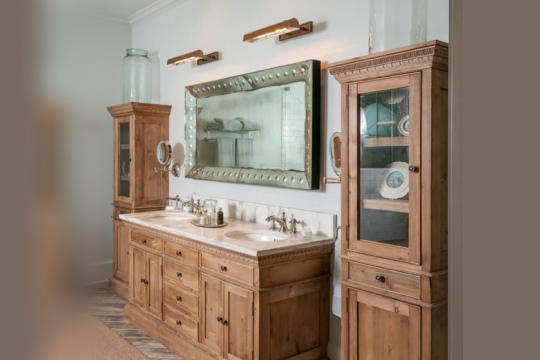
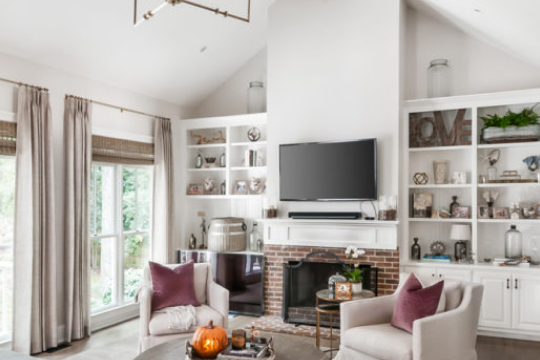
Modern
Farmhouse
Style
Farmhouse interiors exude a cozy, homey feel, with rustic and farm-inspired elements throughout. Shiplap wall paneling, vintage bronze fixtures, farmhouse sinks, and gold accents abound. You might decorate a home in this design style with chalkboard art, reclaimed wood signage, galvanized steel planters, and burlap baskets.
Craftsman
Style
This wonderful style is prevalent in the Atlanta area because it gained popularity during the time when the city was rebuilding after the Civil War. Arts and Crafts and Craftsman styles are not exactly the same, they are more like first cousins. But they are often talked about in an interchangeable way these days, so we’ll do that here for simplicity’s sake. Both styles were a reaction to the automation of the industrial age, honoring the beautiful craftsmanship of handmade, time-consuming, skilled work. Common characteristics of craftsman design include striking wood finishes, stained glass light fixtures, nature-inspired motifs like leaves and acorns, organic color schemes, elaborate millwork, fireplace nooks and built-in furniture.

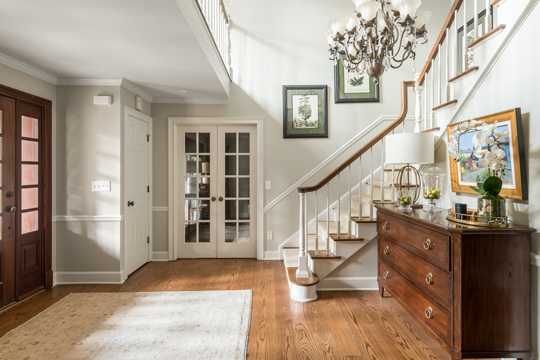
Old-World European & French Country
Design
This style conjures images of leisurely brunches and snuggling up with a good book. The atmosphere is casual, with rustic, seemingly handmade features that catch your eye. Antique shop treasures are right at home in a French country interior. Other features of the European and French style you’ll find include farmhouse sinks, white wood paneling, vintage furniture and artwork, distressed wood, candelabras, and soft floral patterns.
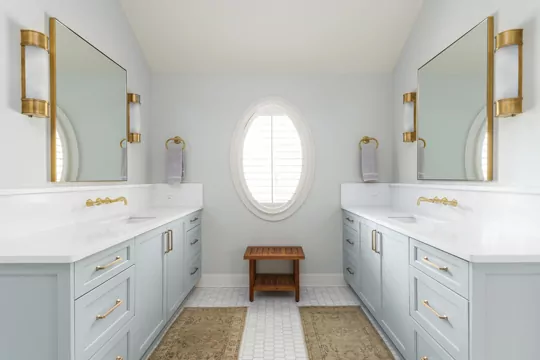
Coastal
Style
Inspired by the coast, this style invokes a light and breezy feeling. It’s a great choice if you want your home to make you feel like you are on vacation — think relaxing retreat. The color palette is plucked from the sea, sand, sky, grasses, and driftwood. While you can go full-on beach with shell motifs, or nautical with anchors, we can also do a much more subtle version that provides the relaxing feel of the coast without an overt theme. Other appropriate materials include weathered wood, glass, rattan, wicker, encaustic cement tiles, and white linen.
Open-Concept
Style
An open concept floor plan is an easy concept to grasp. There are less walls dividing up rooms than there would be in a traditional floor plan. This concept is associated with modern and contemporary designs.
An important thing to consider about open-concept plans is whether you are comfortable with TV noise or kitchen odors traveling between rooms. Make sure you have quiet space elsewhere for homework, working from home, reading, meditation, and privacy… but if you are ready to open up your spaces to one another, we will help you get that wide-open feeling that will share the light between rooms and make your interior feel larger. In doing so, we will also provide some visual delineation between rooms by helping your choose and place furniture, rugs and lighting.
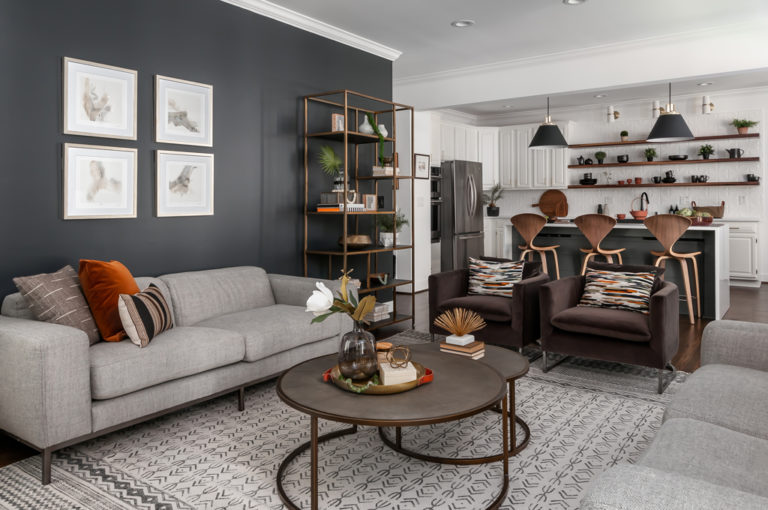

Aging-in-Place
Style
Aging-in-place design aims to ensure safety, comfort and ease of use for those with changing needs. A lessoning of your vision or mobility may require brighter lighting or spaces that can accommodate a walker or wheelchair. With the right adjustments, your home may become your forever home. Common features of aging-in-place design include wider hallways and doorways, non-slip surfaces, grab bars, lever door handles, curbless shower thresholds, shower benches, walk-in tubs, easy-to-grab cabinet hardware, proper lighting and comfort-height toilets. You may want to relocated a primary suite and laundry to one floor, and get rid of any tripping hazards.

Schedule a Home Remodeling Consultation
With Innovative Design-Build
To see other projects we’ve completed in the Atlanta area, please browse our portfolio. To get started, request a no-obligation phone consultation today.
